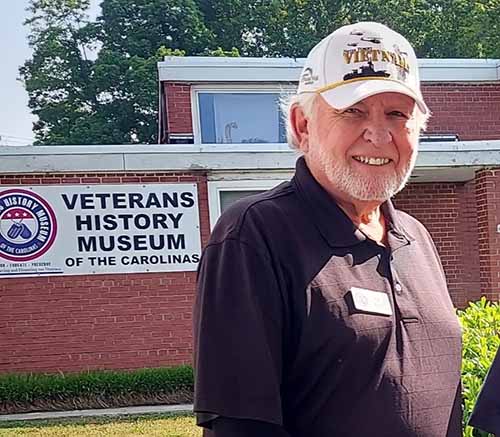The Age of Presidents and the Holy Grail 1971-1991
1971-1991
These were the years when the United States, the Soviets and now China made efforts to improve relations. Finding the “arms race” particularly expensive, they entered into a period of give and take. And in the spirit of giving, when Nixon made a historic visit to China, the US dropped our objection to China’s presence in the UN, and China appeared on the world stage.
SALT Agreement & Helsinki Accords
Also in 1972, SALT I (Strategic Arms Limitation Talks) was signed by Nixon and the Soviet leader, Leonid Brezhnev. The agreement restricted the number of ICBMs (Intercontinental Ballistic Missiles) of both sides. This was followed closely by the Helsinki Accords (a non-binding agreement) which was signed by 35 countries including the USA and the USSR. This recognized the European borders established after World War Two and gave tacit approval to Soviet control over Eastern Europe. Thus a bi-polar balance of power was created which dominated all actions related to future foreign policy.
However, when the Soviets began to update their nuclear arsenal in Eastern Europe in the late 70s, the West responded in kind. But when SALT II was negotiated it gave serious disadvantages to the West in the areas of missiles and heavy bombers—it even counted 230 “mothballed” aircraft to be included under the ceiling. By its overwhelming weight given to the Soviets, the treaty never emerged from Congressional committee. And while Carter said we should live under the intent of the treaty-that-wasn’t, the Soviets made no such commitment.
The Carter Doctrine
When the Soviets invaded Afghanistan in 1979, President Carter outwardly supported the Mujahideen and his CIA clandestinely supported them with weapons and funding. He put forth the Carter Doctrine pledging to use force to stop incursions into the oil rich Middle East states. He also imposed economic sanctions on the Soviets.
Reagan and Star Wars
In 1980, Ronald Reagan came to town. It began the period of “King Arthur and the Black Knight.” After assuming office, Reagan announced an increase in defense spending at the same time the Soviet economy was struggling. So when Reagan approved the Strategic Defense Initiative (Star Wars) in 1983, the Soviets were out of airspeed and ideas. The Black Knight was defeated. And the Grail might be within reach.
Gorbachev Replaces Brezhnev
In Russia a change had also occurred. Brezhnev was out and Gorbachev was in. And to the delight of the West, he was someone with whom even Margret Thatcher (Great Britain’s Prime Minister—the Iron Lady) thought she could negotiate. He brought in an economy based on competition and incentives to produce, reversing decades-old Marxist policies.
However, it was still no match for those in the West so he began cutting spending on nuclear weapons. This led to further negotiations: the Strategic Arms Reduction Talks put a limit on warheads and missiles and the Intermediate Range Nuclear Forces talks limited the levels of intermediate range nuclear forces in Europe and Asia. (The INF was finally signed in December 1987 after more than half a decade of negotiations.)
Militaristically the Cold War was about to end. Thus in 1989, the increased Soviet “laxity” in social and economic programs allowed Eastern Europe to also change. Communist parties in a few vassal states were dropped. Leaders were democratically elected. Borders were open to the West. Former Republics declared their independence.
The Berlin Wall tumbled down.
And the greatest result? The USSR was dissolved and in 1991 Russia became a Republic. Also in September 1991, nuclear-equipped bombers and their associated tankers President Kennedy had on 15-minute ground alert since 1961, were ordered to stand down.
The Cold War had ended.
NOTE: From 1991-1993, Art was assigned to the Office of the Secretary of Defense/Office of Economic Adjustment working to help communities whose bases were selected to close begin the economic development process. In 1992, the office was approached by former Eastern European communities, asking for an appraisal of the facilities the Russians had left.
Long story short, there was no attempt at environmental cleanup. The electrical grid, the water/sewer system, work areas, living quarters, etc., were primarily 1950s technology. No wonder communism failed.
So in the beginning and in the end, what was the Holy Grail? “… [It was] not only to create a tolerable structure of political and economic order, but also to help defend it while under construction from those who still believed that a better world for them could only be obtained through further widespread tearing down.” (Paul Nitze)
We believe that the Grail was achieved. But there is still much to do. Still those out there who would destroy rather than build. But that’s a game of a different nature. Wish us luck.
ENDNOTE: Again, this is an abbreviated look at 42 years. We have keyed on the points we considered important; you may have others just as significant. But from where we sat, from the cockpits of 15-minute alert, to the headquarters of the Strategic Air Command, to making inputs to 1980s NATO war plans, to flying the early models of the U-2, it was quite a ride.

Art Cole served 25 years from 1970-1995. He is a Command Pilot who held Squadron, Base, and Wing command positions. He held senior level positions in Headquarters/Strategic Air Command and the office of the Secretary of Defense. Operationally, he flew the EC-47, T-39, KC-135, and B-52. After retirement he flew 16 years with the Federal Express Corporation. He gets by in English.

Duke Woodhull, after ending his thirty-year Air Force career which began in 1955 and ended in 1985, worked twelve years more with The Boeing Company. He settled with his wife in the idyllic mountains of Western North Carolina. A former U-2 pilot, he also flew the KC-135, C-54 and various other aircraft in his DOD assignments. Duke has held senior Command and Staff assignments and is fluent in two foreign languages.

